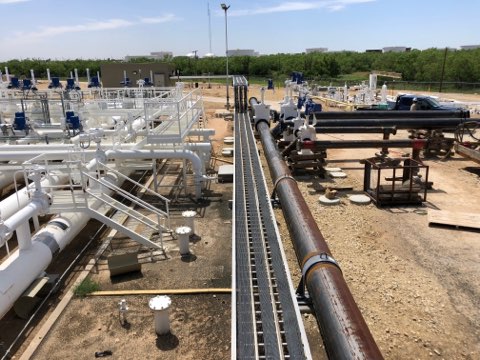Superior Rentals midland: why local access matters
All Regarding Oil Field Equipment and Pipeline Equipment: Key Insights and Necessary Information
Oil field equipment and pipeline systems play a critical duty in the oil and gas market. They are necessary for the effective removal and transport of hydrocarbons. Secret elements, such as piercing rigs and storage space tanks, straight influence operational success. On the other hand, innovations in innovation assurance to enhance safety and security and efficiency. Comprehending these aspects is vital for any individual entailed in or curious about this intricate sector, as it sets the stage for deeper expedition of sector practices.

Overview of Oil Field Equipment
As the need for oil proceeds to grow, recognizing the devices utilized in oil fields comes to be increasingly crucial. Oil field equipment incorporates a large range of machinery and devices crucial for exploration, removal, and processing. Key parts include piercing rigs, which are important for getting to oil tanks, and manufacturing tools, such as separators and pumps, that help with the extraction procedure. Superior Rentals near me. Additionally, storage space tanks play a substantial function in holding crude oil before transport. Safety equipment, including blowout preventers and pressure assesses, guarantees operational safety and security and efficiency. Each tool functions cohesively to optimize manufacturing and preserve efficient workflow. Knowledge with this tools is necessary for professionals in the sector to assure successful procedures and adherence to safety and security standards
Kinds Of Drilling Rigs and Their Applications
Drilling rigs function as the backbone of oil removal operations, with different kinds made for certain geological problems and functional requirements. The most common types include rotating exploration rigs, which use a turning drill little bit to pass through the earth, and cable tool rigs, recognized for their percussion exploration technique. For offshore operations, jack-up rigs and semi-submersible rigs give stability and assistance in aquatic environments. Furthermore, directional boring rigs enable operators to drill at angles, reaching deposits that are not up and down easily accessible. Each gear kind has special benefits, optimizing performance and security based on the drilling environment. Selecting the ideal gear is crucial for making best use of source extraction while minimizing ecological influence and operational prices.

Crucial Pipeline Equipment and Their Functions
Pipeline infrastructure is important for the transportation of oil and gas from removal sites to processing facilities and end-users. Various crucial devices components facilitate this process. Pipelines themselves serve as the key conduits, made to hold up against high pressure and corrosive substances. Pump terminals are crucial for preserving flow by boosting stress along the pipeline. Shutoffs play a crucial duty in controlling circulation and separating sections for maintenance. Furthermore, installations and connectors assure safe joints in between pipeline areas. Monitoring systems, including circulation meters and pressure sensors, are important for finding leaks and maximizing circulation rates. Ultimately, pigging equipment is utilized for upkeep and cleansing, guarding pipeline honesty and performance. With each other, these components form the foundation of a trustworthy pipeline system.
Innovations and Technologies in Oil and Gas Equipment

Safety and Upkeep Practices in the Oil Industry
While the oil industry has actually made considerable strides in modern technology and effectiveness, the relevance of robust security and maintenance techniques can not be overemphasized. Reliable safety and security procedures are vital to shield workers and the environment, lessening the risk of accidents and spills. Regular assessments and upkeep of equipment help determine prospective problems prior to they escalate, making certain functional stability. Educating programs for workers are vital, highlighting the relevance of security recognition and emergency feedback treatments. Furthermore, adherence to sector laws and standards fosters a culture of security. Implementing sophisticated tracking technologies can better improve upkeep methods, enabling for real-time evaluations of tools conditions. Ultimately, prioritizing advice security and upkeep is important to the sustainability and success of the oil sector.
Frequently Asked Concerns
What Are the Environmental Effects of Oil Field Equipment?
The ecological influences of oil field equipment consist of habitat destruction, water contamination, and air pollution (Superior Rentals Contact). In addition, devices malfunction can bring about spills, negatively affecting wildlife and ecosystems, highlighting the demand for stringent policies and tracking
Just How Is Oil Field Equipment Moved to Remote Locations?
Carrying oil field equipment to remote areas frequently includes specific lorries, helicopters, or barges. Logistics companies coordinate courses, ensuring equipment arrives securely and efficiently, thinking about surface and availability to lessen delays and optimize productivity.
What Regulative Requirements Govern Oil Field Equipment?
Regulative requirements controling oil field equipment primarily include security, environmental management, and operational effectiveness standards. Agencies such as OSHA and EPA implement these policies to ensure risk-free methods and lessen environmental influence in oil removal operations.
What Skills Are Required to Operate Oil Area Machinery?

How Do Oil Prices Affect Equipment Need and Use?
Oil prices considerably affect equipment demand and usage. Higher prices normally cause increased exploration and manufacturing tasks, driving demand for machinery. Alternatively, lower costs might lead to minimized procedures and lowered requirement for tools.